Everett, WA Pollen and Allergy Report for Summer 2023
Pollen Allergy Trends in Everett, WA
When is pollen lowest in Everett, WA?

February
Lowest month total PPM
Avg. PPM
When is pollen highest in Everett, WA?

April
Highest month total PPM
Avg. PPM
How does pollen in Everett, WA compare to Washington?
Everett has a higher average PPM than the state of Washington.
Everett yearly avg PPM:
Washington yearly avg PPM:
How does pollen in Everett, WA compare to the USA?
Everett has a higher average PPM than the USA.
Everett yearly avg PPM:
USA yearly avg PPM:
Is pollen worse this year in Everett, WA?
Spring 2023 was worse than spring 2022.
Spring 2023 PPM:
Spring 2022 PPM:
Average PPM in Everett, WA
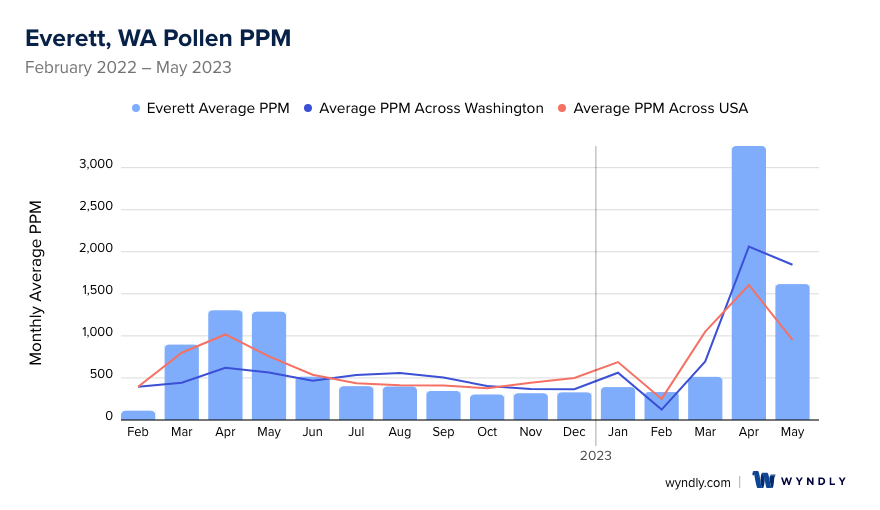
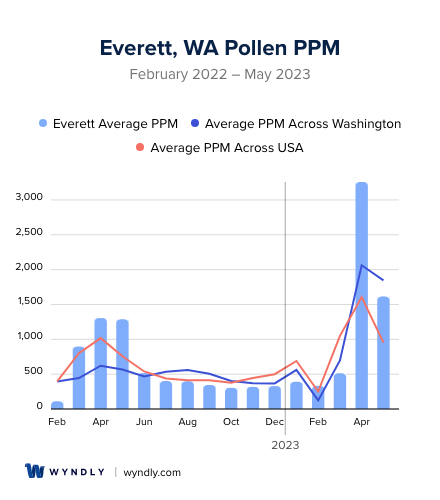
Everett, WA Pollen and Allergy Breakdown by Month
Grass
When is grass pollen highest in Everett, WA?
April has the highest grass pollen in Everett, WA with an average PPM of
When is grass pollen lowest in Everett, WA?
December has the lowest grass pollen in Everett, WA with an average PPM of
Tree
When is tree pollen highest in Everett, WA?
April has the highest tree pollen in Everett, WA with an average PPM of
When is tree pollen lowest in Everett, WA?
October has the lowest tree pollen in Everett, WA with an average PPM of
Weed
When is weed pollen highest in Everett, WA?
April has the highest weed pollen in Everett, WA with an average PPM of
When is weed pollen lowest in Everett, WA?
February has the lowest weed pollen in Everett, WA with an average PPM of
Everett, WA Pollen Monthly Breakdown by Pollen Type
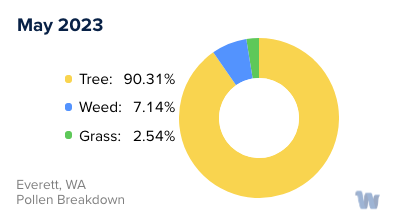
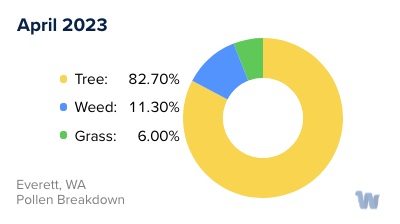
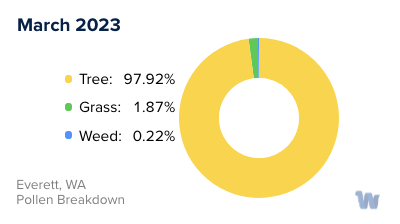
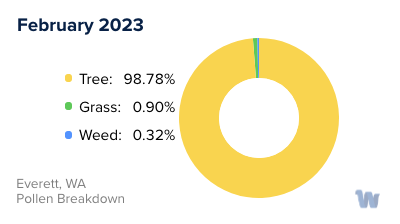
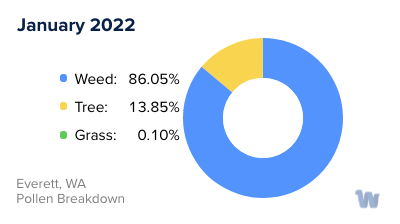
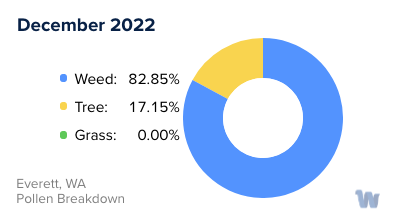
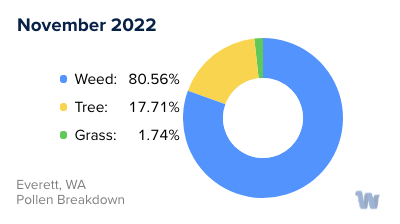
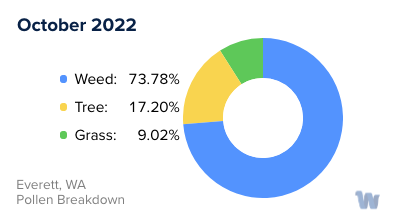
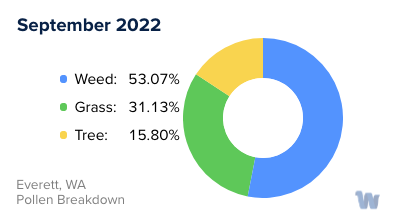
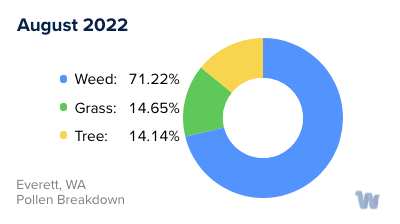
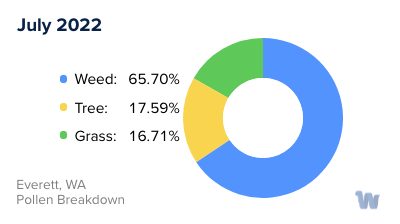
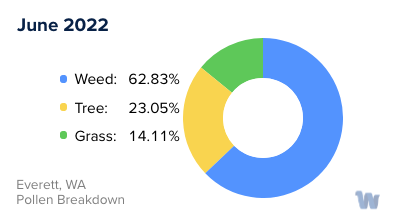
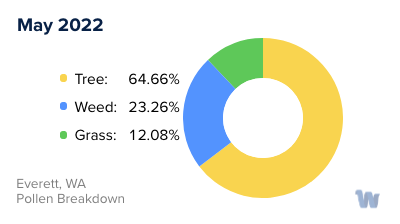
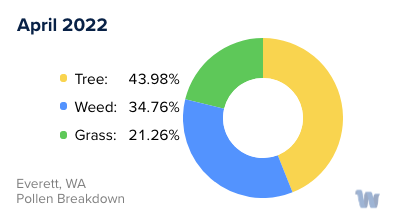
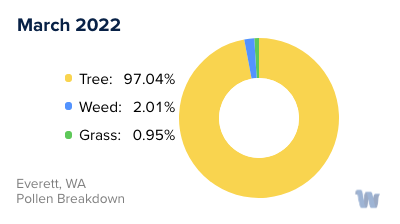
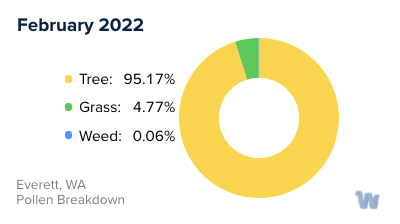
Pollen and Hay Fever in Everett, WA
In the picturesque city of Everett, Washington, nestled between the Cascade Mountains and the Puget Sound, pollen allergies and hay fever are a common seasonal occurrence. As the seasons change, so too does the air, becoming filled with various types of microscopic pollen that can trigger these conditions.
Spring in Everett typically sees tree pollens rise, especially from alder, cedar, maple, and pine trees. These trees start releasing their pollen as early as late winter, and the levels peak in the springtime. Residents may find that this is the time when their hay fever symptoms become particularly pronounced.
As the lush greenery of Everett transitions into the warmth of summer, grass pollen takes the center stage. Timothy grass, Kentucky bluegrass, and ryegrass are among the most common grasses in the area. These grasses release their pollen from late spring to early summer, causing hay fever symptoms in many individuals.
In the fall, the air in Everett becomes filled with weed pollen. The most notorious weed pollen comes from the ragweed plant, but other weeds such as sagebrush, pigweed, and lamb’s quarters also contribute. Though these weeds are not as widespread as trees and grasses, their pollen is highly allergenic and can travel great distances, affecting even those who live in urban areas of the city.
It's also important to note that weather conditions play a significant role in pollen levels. Windy days can stir up pollen, increasing its concentration in the air, while rainy days can help clear it.
While pollen allergies and hay fever can cause discomfort, understanding the types of pollen and the seasons when they are most prevalent can help Everett residents better anticipate and manage these seasonal changes. This knowledge empowers individuals to make informed decisions about their daily activities, helping them enjoy all the natural beauty Everett has to offer, regardless of the season.

